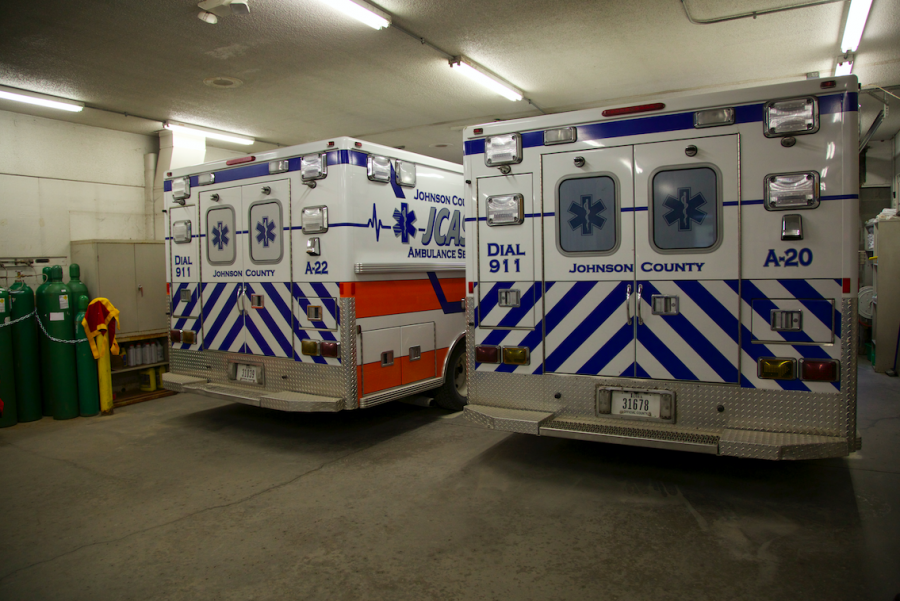Johnson County Ambulance Service aims to address increase in emergency calls
The Johnson County Ambulance Service faces annual rises in the number of calls it must respond to, and smaller pools of paramedics available to hire.
Johnson County ambulances are photographed Thursday, Feb 4 in Iowa City. Four ambulances are parked tightly in one garage with limited space. (Eden Hall/The Daily Iowan)
December 2, 2019
Johnson County sees upticks in the number of calls it receives for its ambulance service nearly every year. In response, the Johnson County Ambulance Service is aiming to work proactively to cope with rising demand for its services.
The service’s director, Fiona Johnson, said the struggle of dealing with each year’s rise in call volumes is a balancing act — such as the 9 percent jump in emergency calls from fiscal 2018 to 2019.
“There’s work that is involved in making sure we have the appropriate resources in the appropriate areas and then every budget year having to increase the staffing to reflect the need based on increase call service,” Johnson said.
This year’s pace of call volumes is on track to continue the rising trend, Johnson said. Fiscal 2019 currently fluctuates, but there’s been an about 7 percent increase from this time last year, she said. The call volume last year was 11,777.
Though the work is challenging and the necessary resources must be accounted for, Johnson said that the service is meeting the needs of Johnson County, despite some public concern.
“We have not been strained in the sense that we haven’t had the resources available,” Johnson said.
Johnson said the ambulance service is able to maneuver its available resources to meet whatever needs may arise.
“We monitor our call volume and where the 911 calls are coming from, and then shift our resources accordingly,” she said. “We add staffing to particular nights that are busy and to particular stations where the majority of the calls are coming from.”
The ambulance service currently has 72 employees, which consist of 50 paramedics and 12 EMTs, said Johnson County Ambulance Service Paramedic and Assistant Director Jeremy Peck.
“The past several years staffing Paramedic’s on the ambulance has become increasingly more difficult,” Peck said in an email to The Daily Iowan.
Peck attributes this difficulty in part to the hiring practices of hospitals.
“Hospitals began hiring Paramedic’s in some areas as the Paramedic scope of practice is larger and their training allows them a broader spectrum of skills — therefore taking the Paramedic out of the pre-hospital setting, leaving a gap for EMS to find qualified providers,” said Peck.
RELATED: New UIHC unit will take burden off of emergency room
Amanda Voss-Grumish, the Johnson County Ambulance Service paramedic field supervisor, said in an email to *The DI* that the work of paramedics is emotionally and mentally difficult at times and physically challenging.
“We are expected to get up and down often, carry patients who are unable to walk, and we are out in all elements 365 days per year,” Voss-Grumish said. “At our service, we work 16 hour shifts to reduce fatigue sometimes found in 24-hour shifts.”
Peck said that the service’s speed is a great source of pride for the team, and that this is enabled by their ability to strategically station their ambulances throughout the county.
“[A] Paramedic’s job is definitely mentally and emotionally challenging. Paramedics see more than they should ever have to,” Peck said. “They have to weigh the good/bad and remind themselves at the end of the day they are doing good things.”






